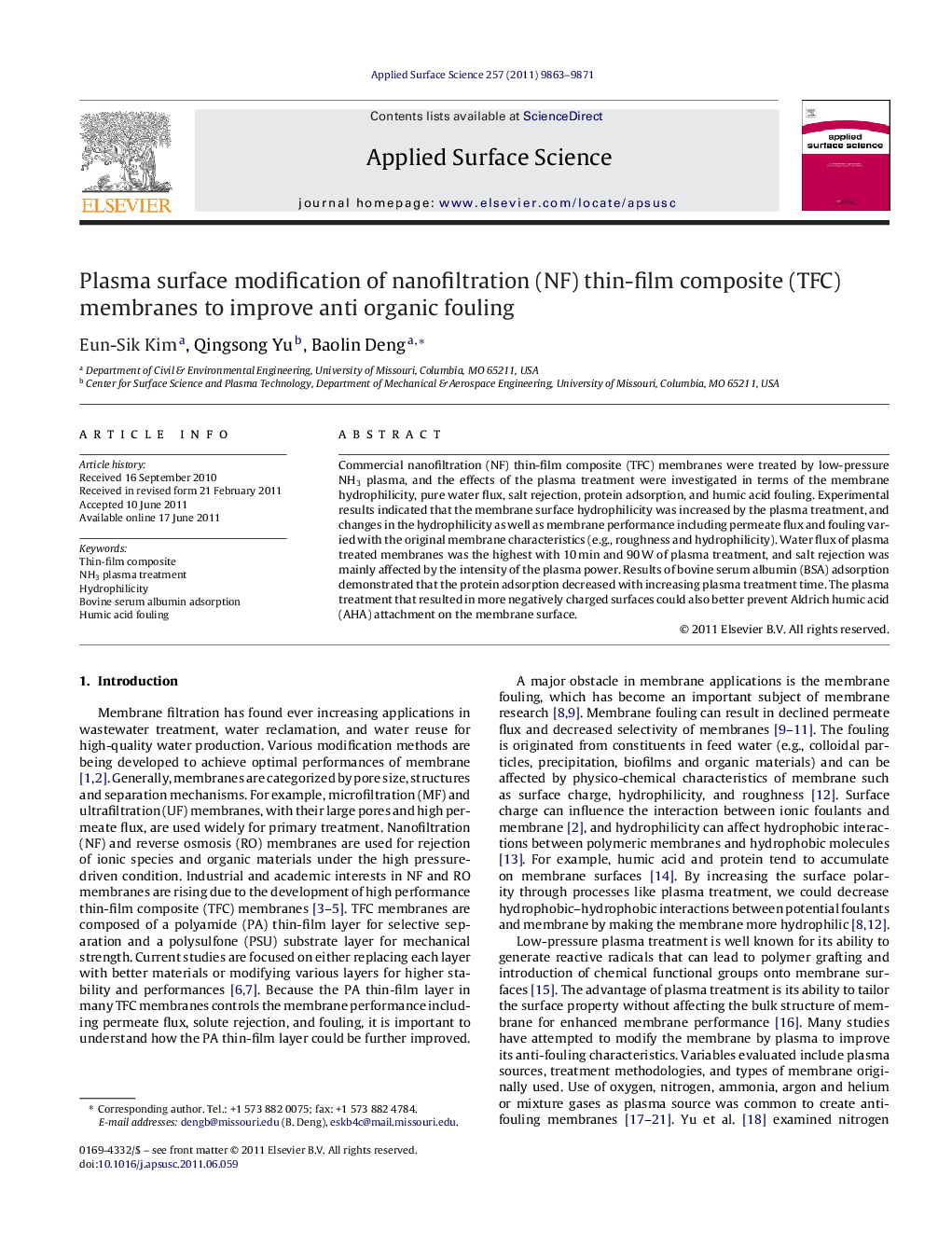| Article ID | Journal | Published Year | Pages | File Type |
|---|---|---|---|---|
| 5367360 | Applied Surface Science | 2011 | 9 Pages |
Commercial nanofiltration (NF) thin-film composite (TFC) membranes were treated by low-pressure NH3 plasma, and the effects of the plasma treatment were investigated in terms of the membrane hydrophilicity, pure water flux, salt rejection, protein adsorption, and humic acid fouling. Experimental results indicated that the membrane surface hydrophilicity was increased by the plasma treatment, and changes in the hydrophilicity as well as membrane performance including permeate flux and fouling varied with the original membrane characteristics (e.g., roughness and hydrophilicity). Water flux of plasma treated membranes was the highest with 10Â min and 90Â W of plasma treatment, and salt rejection was mainly affected by the intensity of the plasma power. Results of bovine serum albumin (BSA) adsorption demonstrated that the protein adsorption decreased with increasing plasma treatment time. The plasma treatment that resulted in more negatively charged surfaces could also better prevent Aldrich humic acid (AHA) attachment on the membrane surface.
⢠Low-pressure NH3 plasma treatment of commercial thin-film composite membranes. ⢠Surface hydrophilicity and charge are dominant factors for membrane organic fouling. ⢠Less fouled protein and humic acid are caused by the enhanced surface properties. ⢠Higher salt rejection was achieved by the plasma-induced surface cross-linking.
